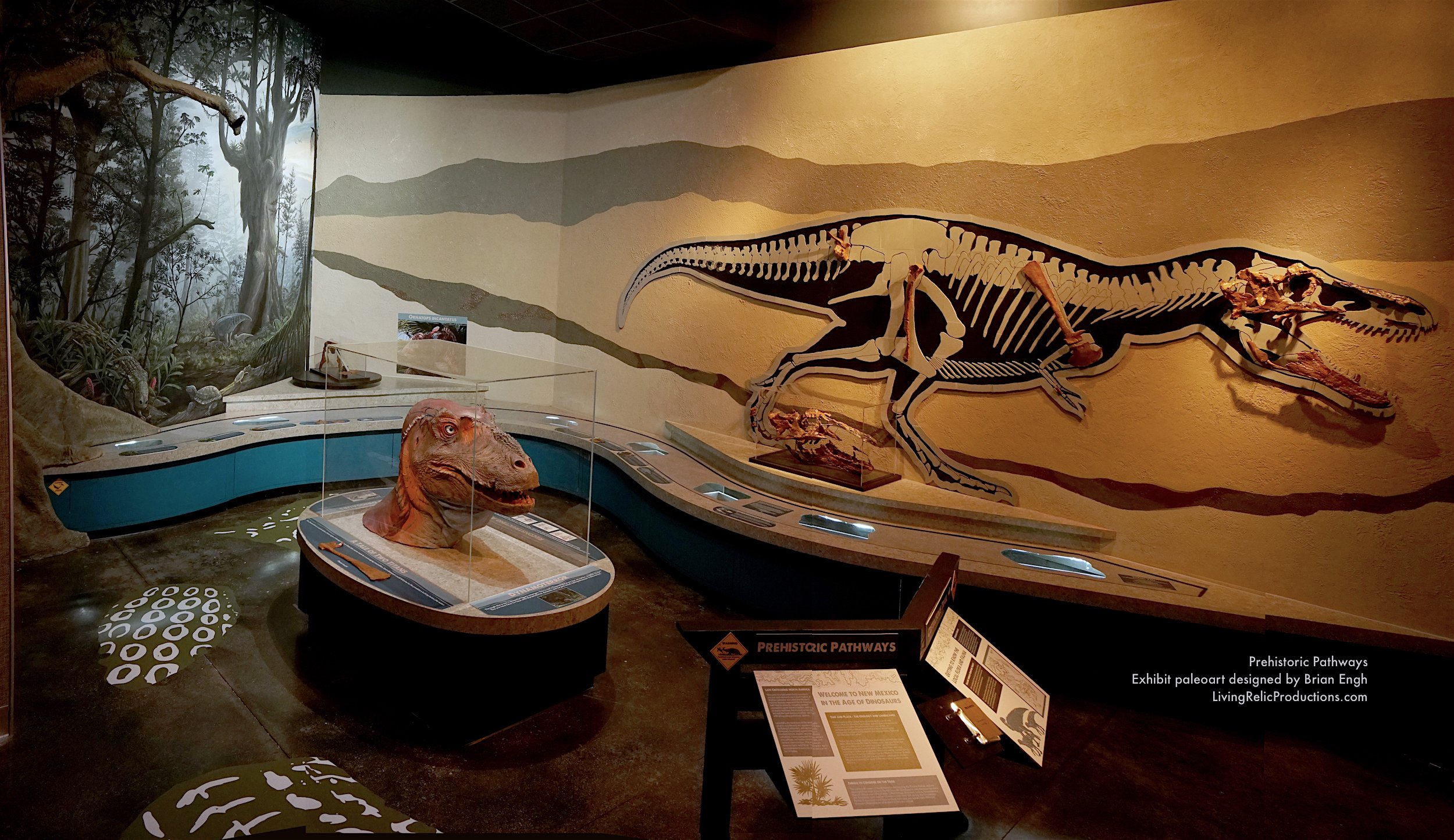
Exhibits
Prehistoric Pathways - Western Science Center, hemet CAlifornia
This exhibit was designed around new fossil discoveries in the Late Cretaceous Menefee Formation of New Mexico, now on display at Western Science Center in Hemet California. For this exhibit Living Relic’s lead artist Brian Engh designed all the art featured in the exhibit, consulted with the museum on overall exhibit design & layout, and worked with the museum’s curators to define a style for the exhibit graphics that supported the overall story concept and scientific themes of the exhibit. Brian then lead a team of artists in hand-painting a large-scale Cretaceous forest mural. The mural design was based on a detailed review of Cretaceous fossil plant life conducted by Brian in consultation with outside paleobotanist Nathan Jud, who also helped identify fossil plant specimens recovered from the Western Science Center’s dinosaur quarries in the field. Brian also created several full-color illustrations and numerous “naturalist’s notebook” styled drawings featured throughout the exhibit signage. Brian and a small team of artists also sculpted a life sized bust of a newly discovered tyrannosaur named Dynamoterror dynastes, as well as a large artificial tree inspired by petrified stumps found near the museum’s dinosaur quarries in New Mexico.
The aztec sandstone - Las Vegas Natural History Museum
About 180 million years ago in the early Jurassic Period a vast sea of desert sand dunes spread across Western North America. The sand deposited by those shifting dunes formed several vast rock formations including the Aztec Sandstone in Nevada. While fossil bones from this time period are extremely rare, and have yet to be found in Nevada, prehistoric animals left their tracks in those desert sand deposits, giving us a window into early Jurassic life.
This exhibit, featuring a life-sized sculpture of the early Jurassic theropod Dilophosaurus was designed and fabricated for the Las Vegas Natural History Museum to give visitors a glimpse of what that ancient desert world might have been like. The Dilophosaurus sculpture was based on rigorous skeletal measurements published by Dr. Adam Marsh, and it can be seen looming over small burrowing relatives of mammals called Tritylodonts, whose tracks are the most abundant track type found in Nevada’s Aztec Sandstone.

The museum’s available resources required that this exhibit fit within pre-existing casework. This presented a major design challenge: How to fit a large dinosaur within a relatively small footprint with low ceilings, while also giving guests a sense of the vast desert environment these ancient animals once inhabited. Various arrangements were tested with a scale mock up of the sculpture in order to optimize the final pose to work within the space. We also designed a cutaway dune element that fit into the existing casework, allowing guests to view the small burrowing Tritylodonts in their subterranean burrows. The result is a dynamic composition that invites viewers to walk around the diorama and explore it from several angles.
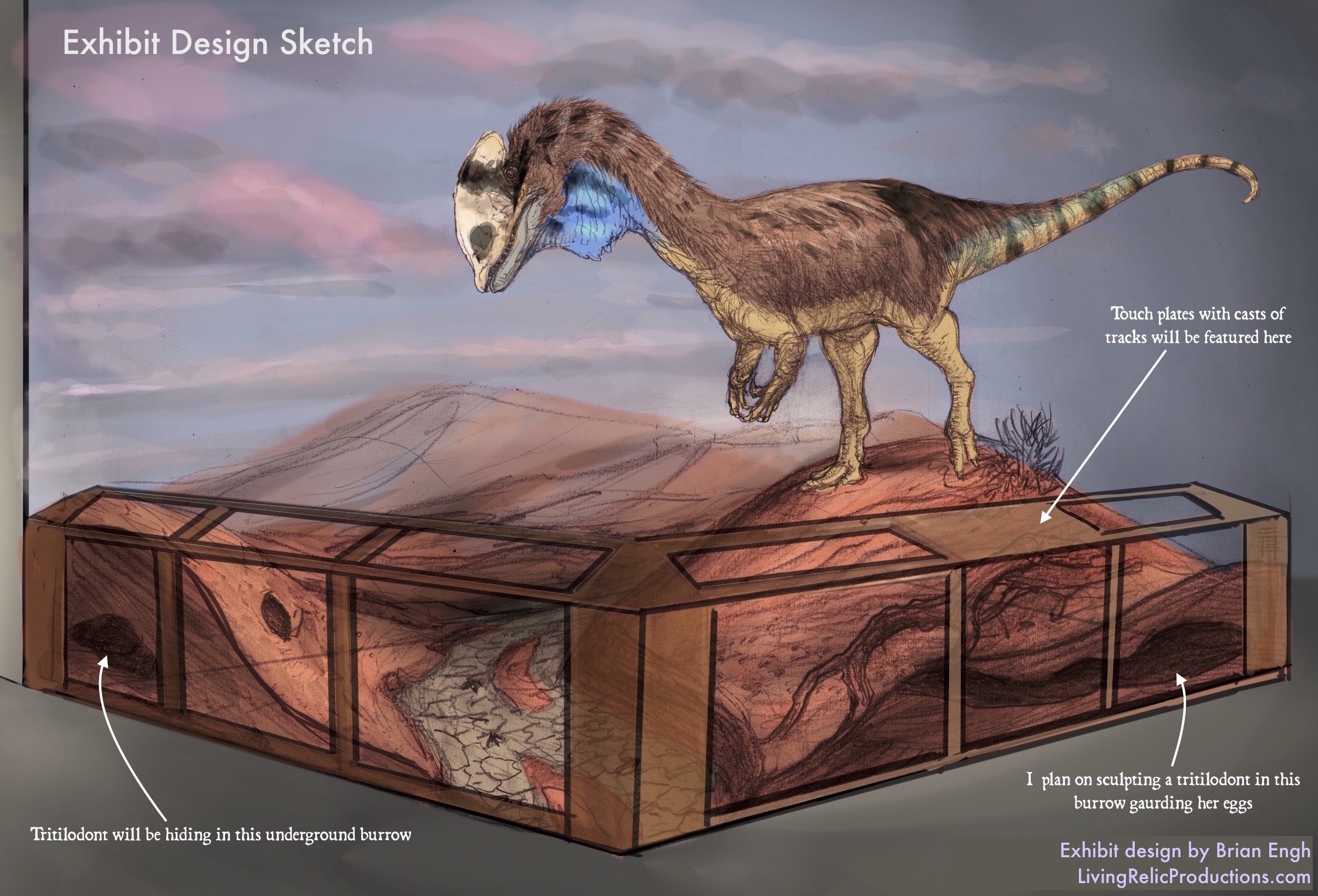

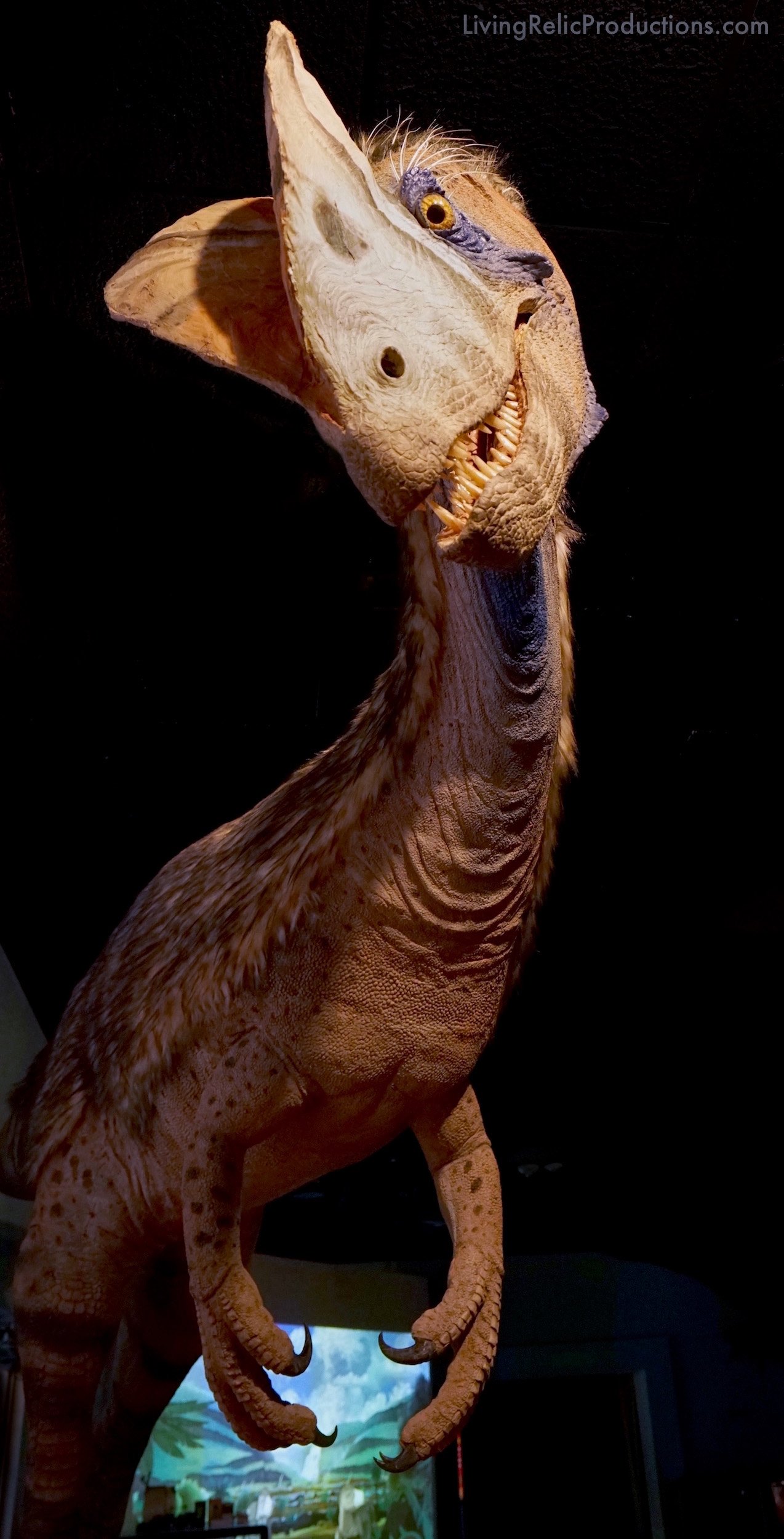


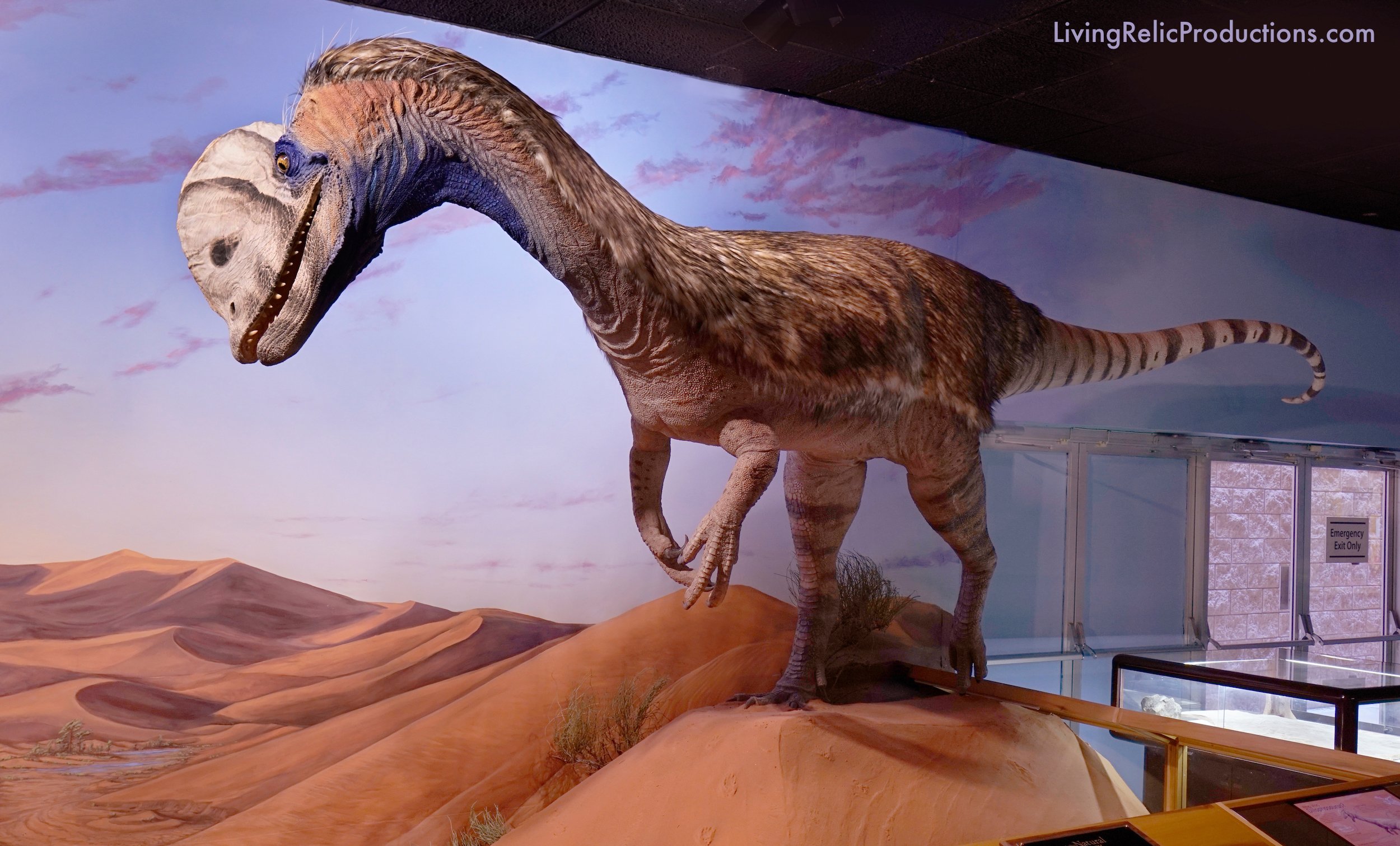

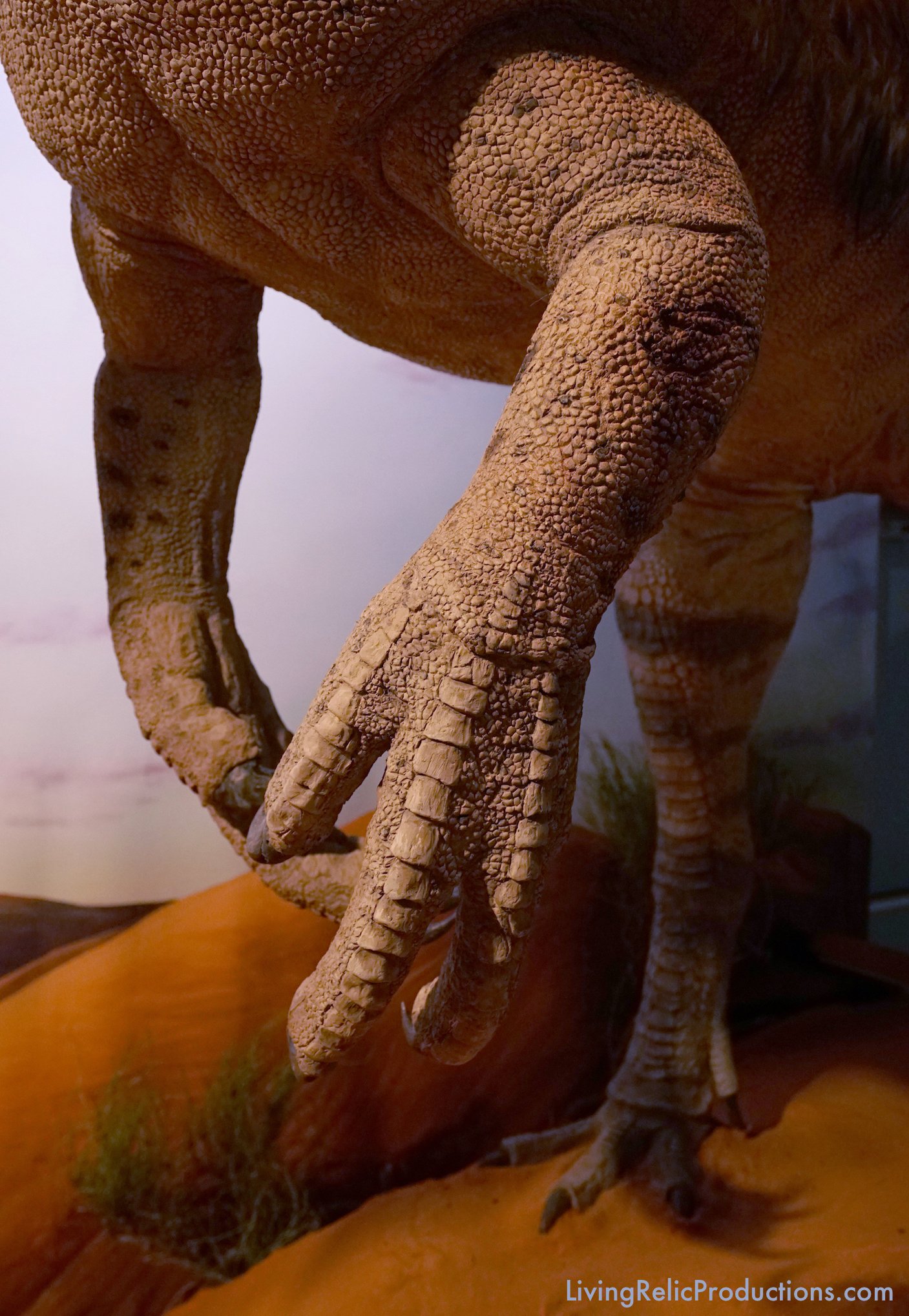
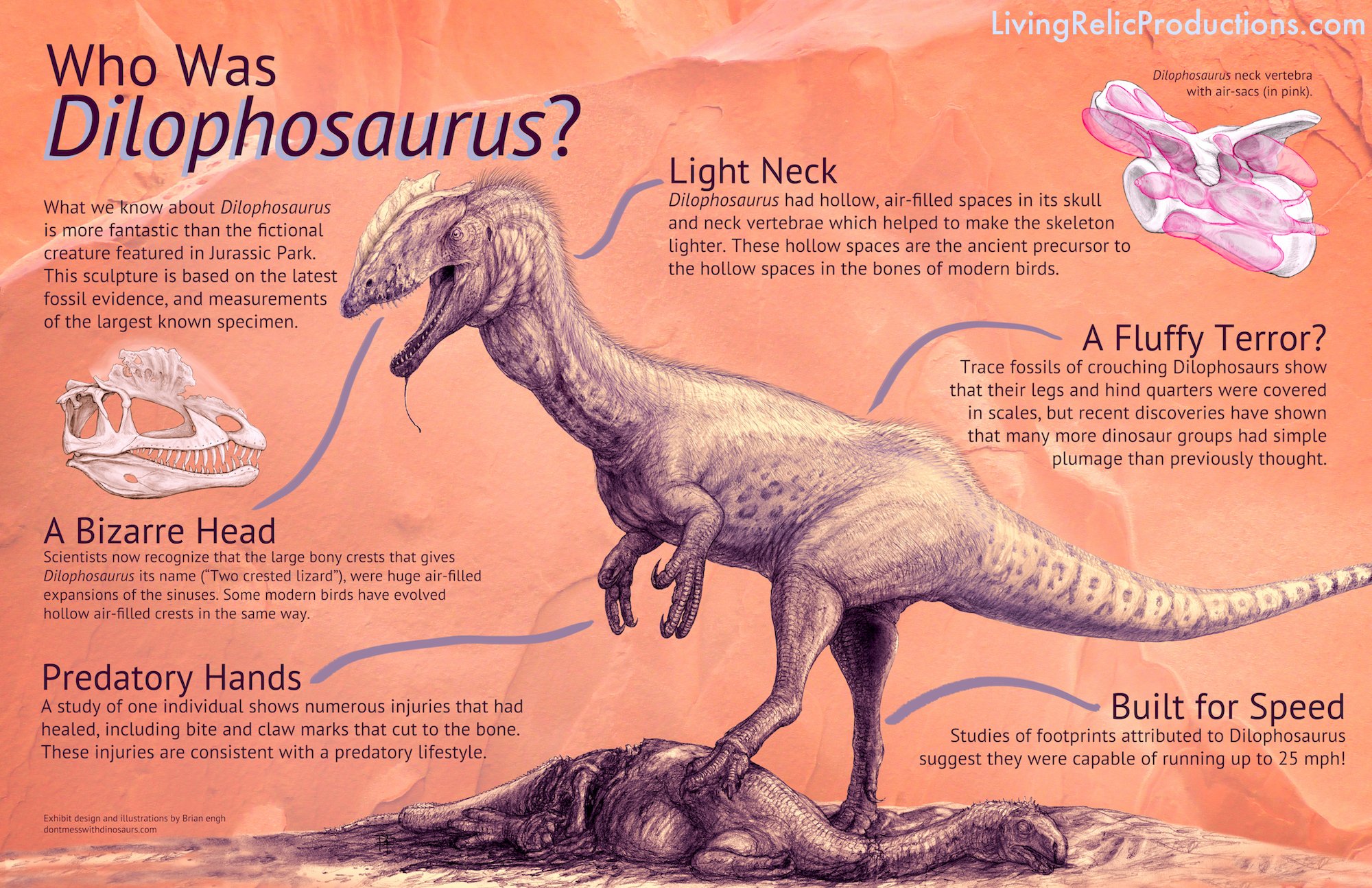

Savage Ancient Seas - traveling exhibit by Triebold Paleontology INC.
For over 30 years Triebold Paleontology Inc. has been a leading provider of high quality casts and fossil skeletons to natural history museums. During those decades they have spent considerable time and energy exploring the Kansas chalk in search of fossils left by marine animals that swam in a vast inland sea that covered Kansas around 80 million years ago during the Late Cretaceous period. In 2018 Triebold put together a massive traveling exhibit featuring a huge number of their finds from the Kansas Chalk, and Brian Engh was commissioned to create all the art for the exhibit as well as design the exhibit graphics in collaboration with Triebold Paleontology’s lead paleontologist Anthony Maltese.
Award-Winning Art
The centerpiece mural of the of Savage Ancient Seas, depicting Tylosaurus preying on the giant fish Xiphactinus, won the National Geogrpahic Lanzendorf Award for Paleo Art in 2018. While the mural was the largest illustration, it was only one of over 50 illustrations depicting all aspects of Cretaceous sea life in the Western Interior Seaway.








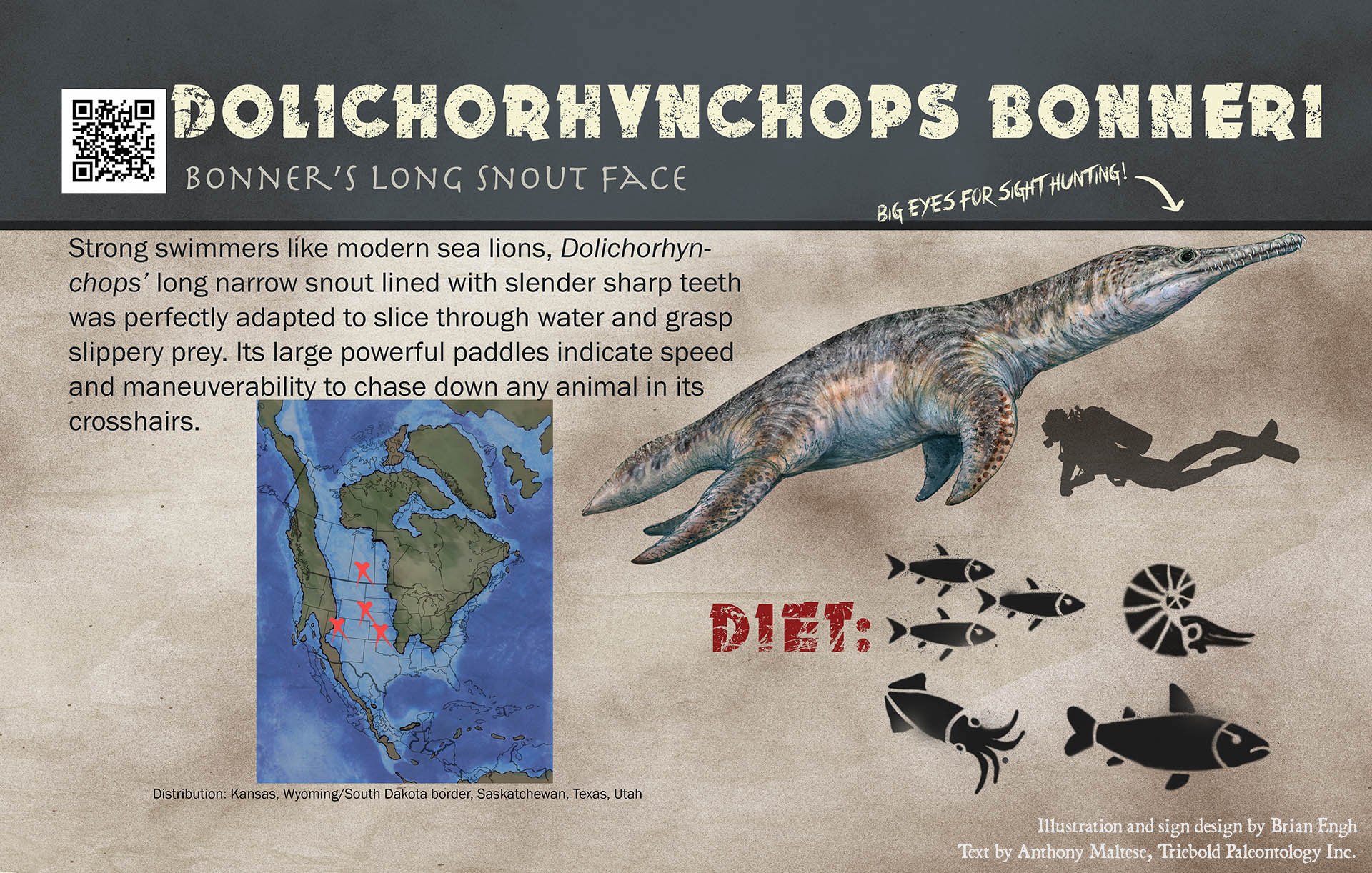

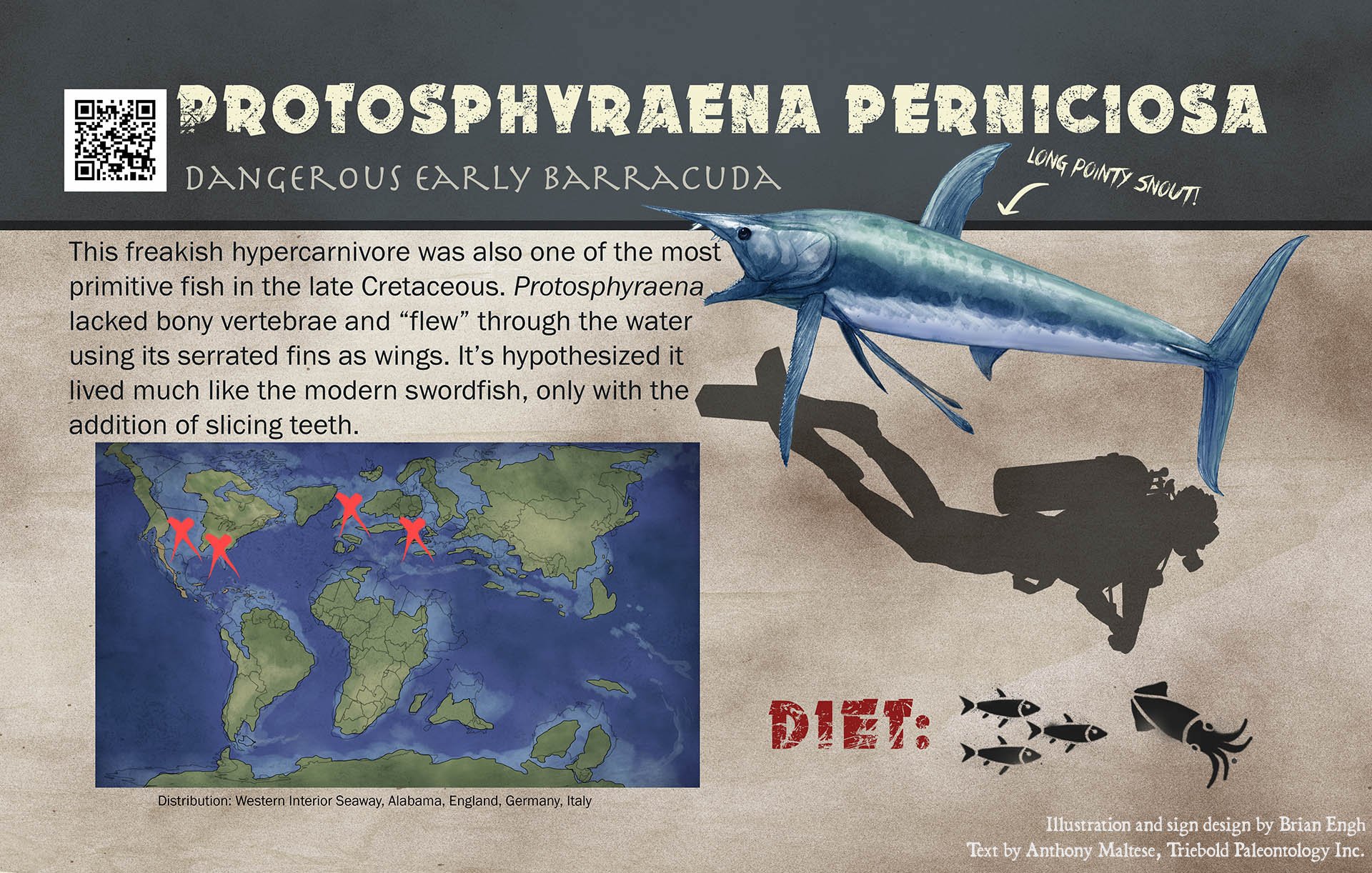



Caiuajara pterosaur sculpture - National Aviary, Pittsburgh
This life sized Caiuajara (a pterosaur from the Cretaceous of Brazil) was commissioned by the National Aviary in Pittsburgh, to accompany a traveling exhibit by Silver Plume Exhibitions. Brian Engh consulted with Pterosaur experts prior to sculpting, and a full skeletal reconstruction was made based on published skeletons of Caiuajara. Reconstruction of the crest was informed by several specimens of the closely related pterosaur Tupandactylus, which have been found with remnants of their soft tissue crest preserved in association with the underlying bony crest. This sparked the idea to use translucent plastic for the parts of the crest that would have been composed of keratin, which when backlit by the natural light in the Aviary’s atrium, would reveal the underlying bony anatomy of the crest. Vibrant colors were chosen to emphasize the likely social display function of the crest, which also helped this sculpture fit in nicely among the other gaudy living bird inhabitants of the Aviary.

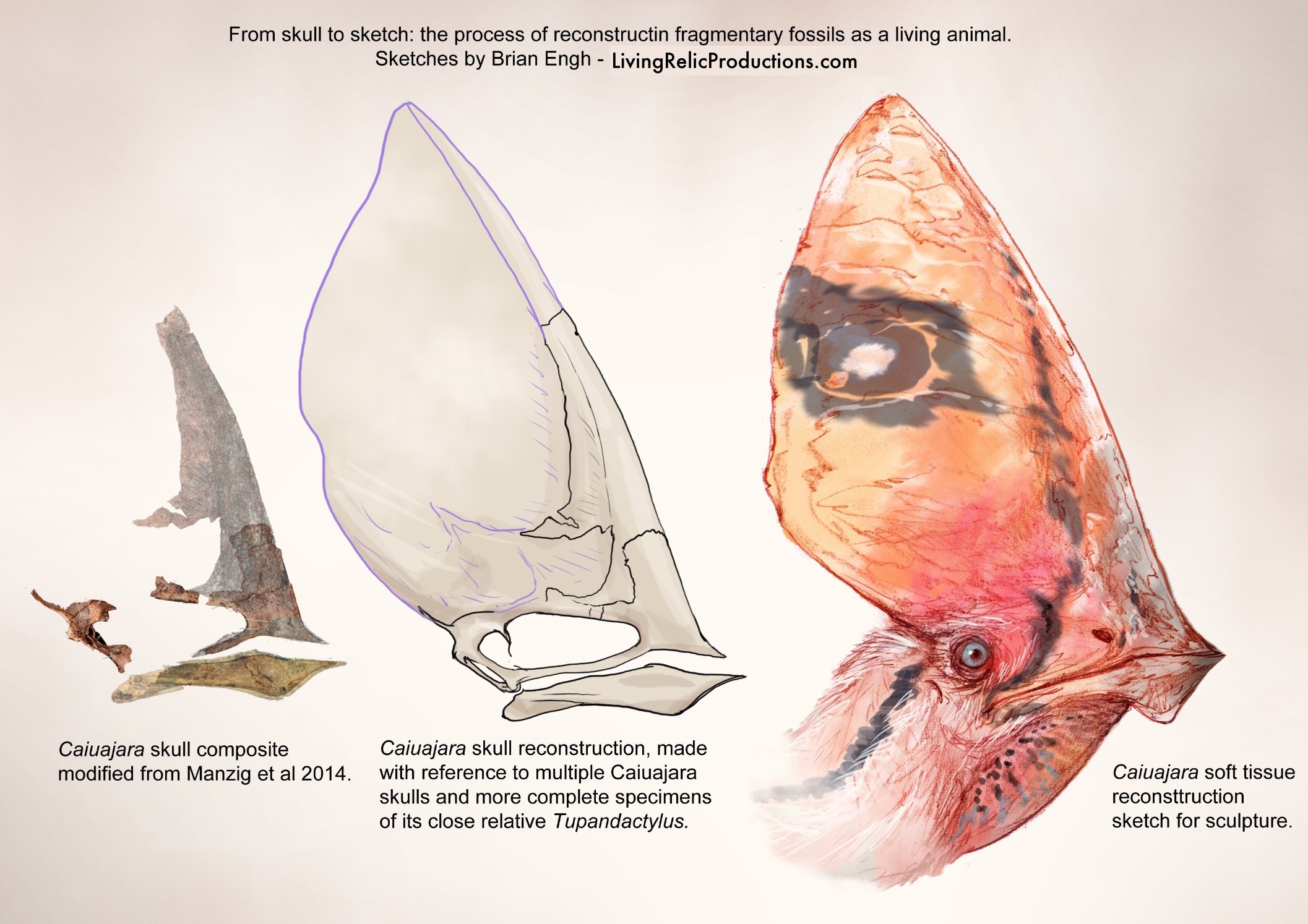

Saint George Dinosaur Discovery Site: Kayenta Timeline Mural
This is one of the most ambitious murals we’ve tackled. It attempts to show a changing landscape, perhaps spanning several million years in the early Jurassic Kayenta Formation, based on discoveries in Southern Utah and Northern Arizona, with significant input and interpretation of field sites by Andrew Milner, lead paleontologist at Saint George Dinosaur Discovery Site. On several occasions Brian joined Andrew on his field surveys and digs in southern Utah, and captured his on-site interpretations of the rock strata on camera so that the mural would accurately reflect the latest understanding of the fossils in the context of the early Jurassic geology where they are found.
